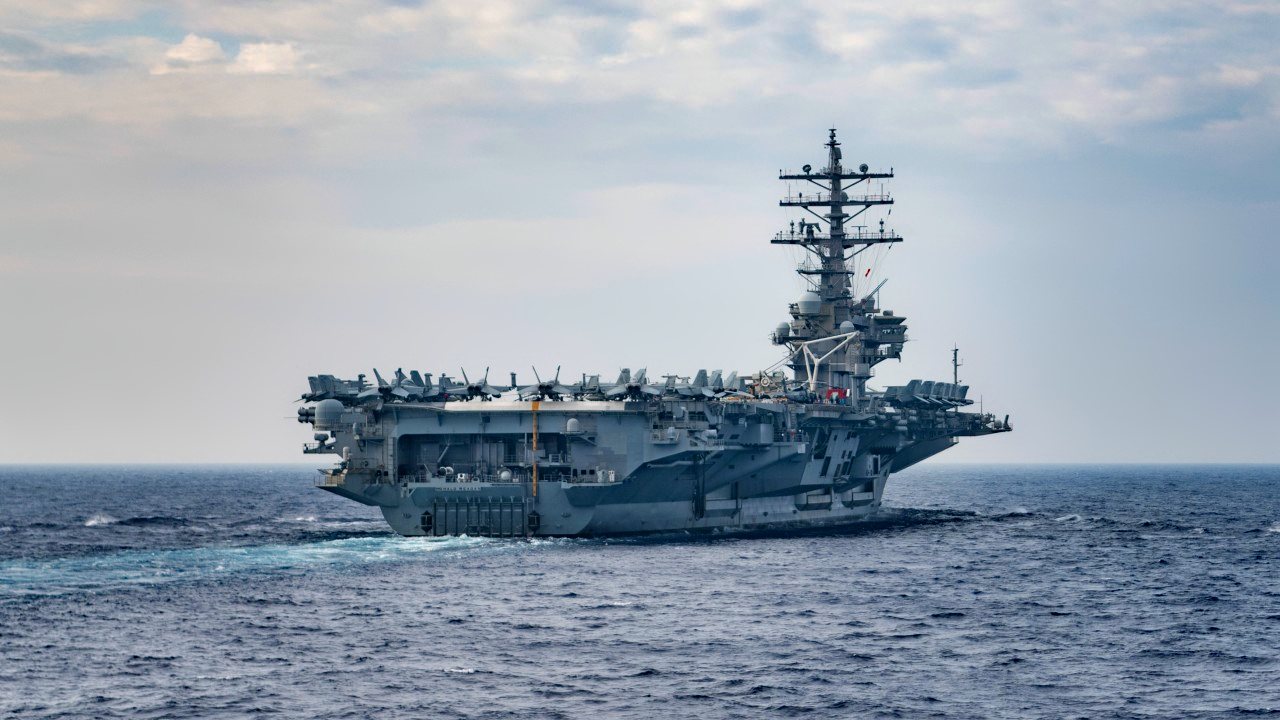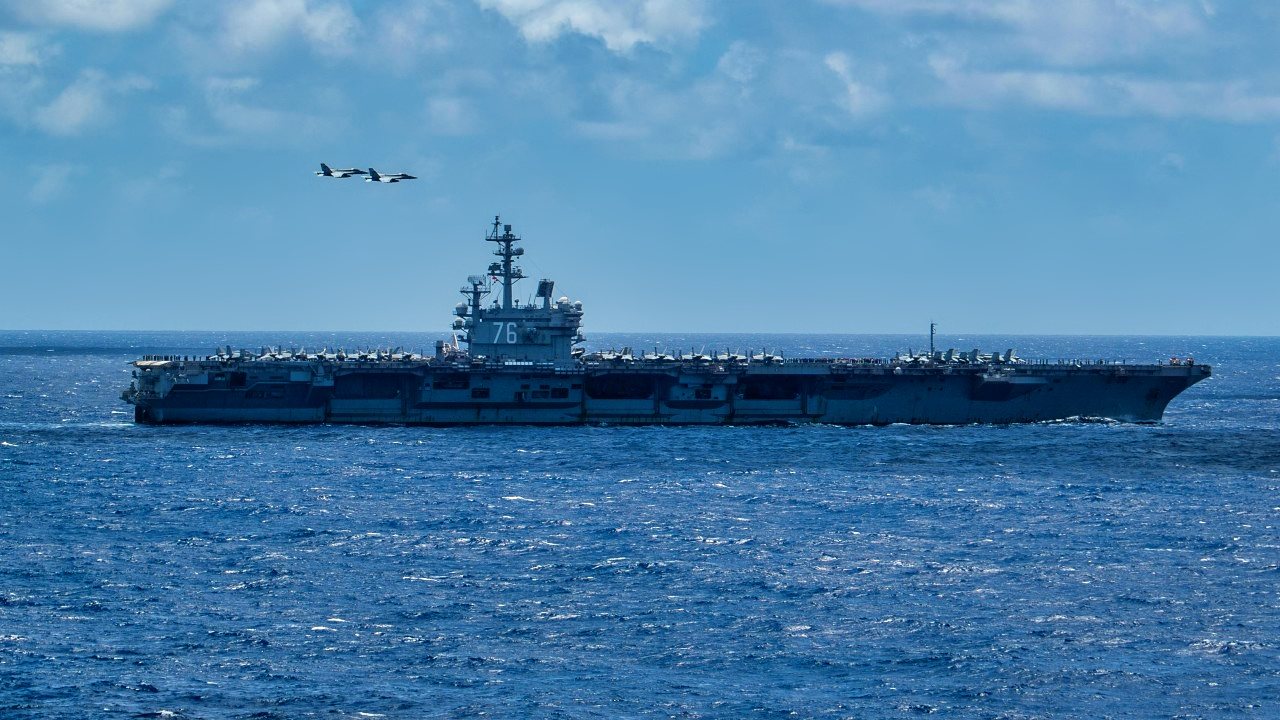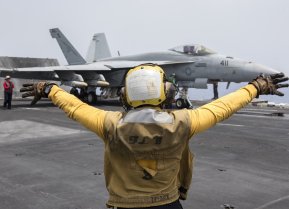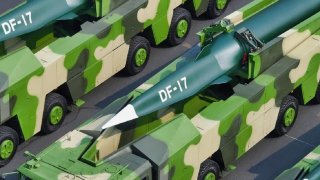China Has Thousands of Missiles for 1 Goal: Sink Aircraft Carriers and Win a War
China’s advanced anti-access/area-denial (A2/AD) defenses—comprising missile, tracking, and counter-space systems—create formidable challenges for U.S. forces, preventing effective naval and air deployment in contested areas.
What You Need to Know: China’s advanced anti-access/area-denial (A2/AD) defenses—comprising missile, tracking, and counter-space systems—create formidable challenges for U.S. forces, preventing effective naval and air deployment in contested areas.

-The solution isn't more aircraft carriers but disabling or destroying A2/AD networks. This means deploying hypersonic missiles, counter-satellite tactics, and drone swarms to overwhelm and breach these defenses.
-The U.S. must prioritize advanced unmanned vehicles and long-range missile production to counter China’s advantage.
-Failure to address these vulnerabilities could allow China to extend influence through the First to the Third Island Chains, posing greater risks to regional security and U.S. interests.
Missile Challenge: Overcoming China’s A2/AD Won’t Be Easy But There is a Way
China’s massive arsenal of conventional missiles poses a severe threat to the United States military. Having built their arsenal up over the last decade, incorporating increasingly sophisticated and long-range systems, such as even hypersonic weapons, the US military will find itself unable to stop the swarms of incoming missiles when a war between the United States and China erupts.
Under the auspices of anti-access/area-denial (A2/AD) defenses, the Chinese can create what experts liken to a “bubble.” Basically, there are so many long-range ballistic missiles, anti-ship ballistic missiles, and even hypersonic weapons deployed to Chinese bases throughout the South China Sea and along China’s coast just across from Taiwan, that China’s military can prevent the US military from deploying its navy and air force against Chinese forces operating within those “bubbles.”
In fact, the world has seen how anti-ship ballistic missiles employed by the ramshackle Houthi Rebels in the wilds of Yemen have stymied traditional US Navy power projection against them. Rumors continue to proliferate months after the incident that an American aircraft carrier, the USS Dwight D. Eisenhower, may have either been damaged or, more likely, experienced a Houthi anti-ship ballistic missile get dangerously close to the carrier. An American destroyer captain recounted to Business Insider the harrowing nature of his ship’s deployment to the Red Sea, which was under bombardment from Houthi Rebels daily.

With China, one can anticipate that Americans will have a similar experience to the sailors who have fought against the Houthi Rebels. In fact, one must assume that China’s threat to US warships will be even greater than what the Houthis are able to do.
The Americans, therefore, would be unable to effectively deploy their expensive against Chinese forces in a war because those Chinese forces would have the protection of the A2/AD bubbles.
When Standard Operating Procedures Just Won’t Do
The solution, contrary to what the Pentagon obviously thinks, is not to blow another $13 billion on a new aircraft carrier. The solution is for the Americans to focus on either disabling parts of, or better yet completely destroying, China’s A2/AD capabilities.
American power projection at the outset of any conflict, therefore, would have to be uniquely tailored to the threat environment. No carriers could get near Chinese forces or contested territories in the Indo-Pacific until the A2/AD networks were obliterated. Further, China’s military has spent an inordinate amount of time creating increasingly complex tracking and detection capabilities—not just in their near-abroad, but globally.
A growing constellation of satellites, married to artificial intelligence (AI) capabilities, has been created by the Chinese that can track US Navy assets as they move around the world. Satellites equipped with powerful lasers ordinarily used by oceanographers to study the ocean floor in detail have been retooled and placed on satellites to effectively locate American nuclear-powered submarines undersea.

Remember the Great Balloon Scare of 2023? Yeah, well the balloons that China sent over the United States were part of a longer-running program by Chinese state-backed firms, like Huawei, to place advanced sensors atop simplistic balloons. A fleet of similar balloons dot the skies above the South China Sea and are used to track the wakes of ships passing through there. Chinese analysts are then able, with the help of AI, to identify whether those wakes belong to warships or not.
The point is that the A2/AD networks are difficult to get to. But they are not impossible to attack. The Americans and their allies will simply need to get innovative. The United States Army wants long-range hypersonic and conventional ballistic missiles arrayed beyond the horizon of those A2/AD systems.
The Air Force is developing hypersonic cruise missiles to be launched from long-range strategic bombers, such as the B-2 “Spirit” stealth plane or, eventually, the B-2’s replacement, the B-21 Raider. The US Navy also wants to eventually equip their submarines with hypersonic cruise missiles.
America’s Response to China’s A2/AD Long-Range, Hypersonic, Counterspace, and Unmanned
If a war starts between China and the United States, both Beijing and Washington plan to disrupt each other’s satellite networks. The Americans rely disproportionately more on satellites for both military and civilian functions. China knows this. But America can—and should—knock out those Chinese satellite communications charged with tracking US Navy warships on top of whatever other Chinese satellites will be targeted.
The Americans will also need to deploy swarms of drones, both underwater and in the air. These systems will be used to swamp whatever defenses exist around those A2/AD networks, allowing for the inevitable blitz with long-range ballistic missiles and hypersonic cruise missiles to do their work. Once the A2/AD networks are suppressed, only then can the Americans risk their obscenely expensive aircraft carriers.
But the key for the incoming Trump administration will be to prioritize the production of unmanned undersea vehicles (UUVs) and advanced unmanned aerial vehicles (UAVs) as well as long-range ballistic missile arsenals and hypersonic cruise missiles to match, counter, and overcome the sizeable advantages that China’s arsenal currently has over the US military. Failure to do this will mean that the Americans have effectively ceded the South China Sea, parts of the East China Sea, the Taiwan Strait, and even the Yellow Sea to the People’s Republic of China.
Once that happens, the Chinese then move with great speed to push their power beyond that First Island Chain all the way to the Third Island Chain (which includes Hawaii), and it’s a whole new ballgame.
About the Author:
Brandon J. Weichert, a National Interest national security analyst, is a former Congressional staffer and geopolitical analyst who is a contributor at The Washington Times, the Asia Times, and The-Pipeline. He is the author of Winning Space: How America Remains a Superpower, Biohacked: China’s Race to Control Life, and The Shadow War: Iran’s Quest for Supremacy. His next book, A Disaster of Our Own Making: How the West Lost Ukraine, is available for purchase wherever books are sold. Weichert can be followed via Twitter @WeTheBrandon.
Image Credit: Creative Commons.


